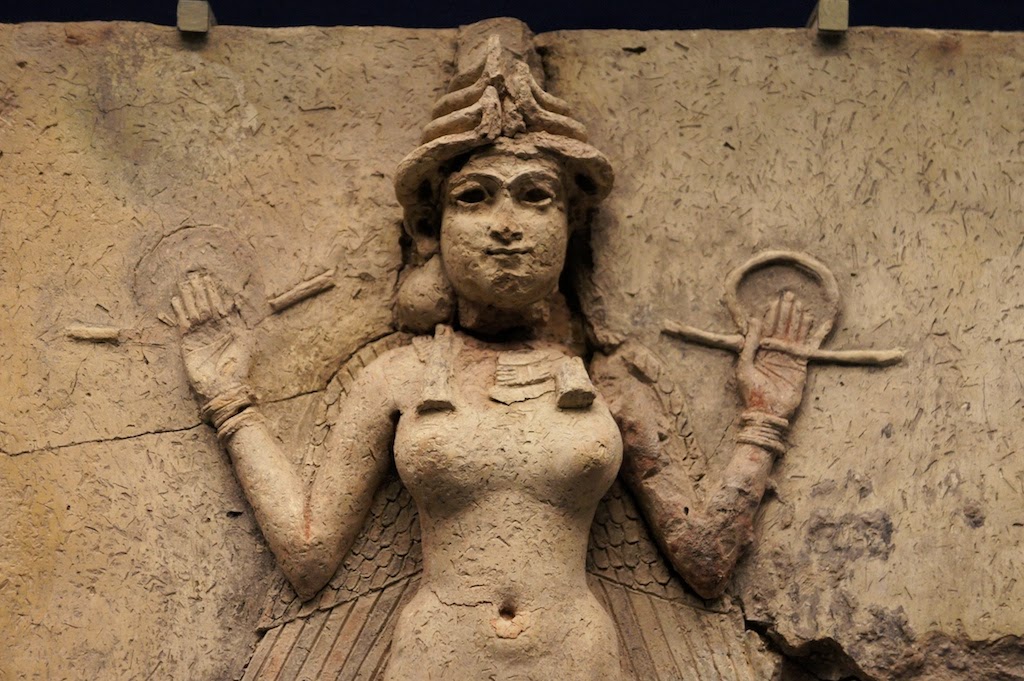My World Of Archaeology
Adventures in history, art and archaeology
Saturday, 17 January 2015
Who Is The Queen of the Night?
Fishbourne, a surprising Roman palace on the Sussex coast
There was an element of nostalgia about my trip to Fishbourne Roman palace. The last time I visited I was on a school trip (and no, I'm not saying how long ago that was). My timing was good - the weather was wonderful, and as it was a Bank Holiday the Roman re-enactment society the Ermine Street Guard were putting on a display. They pride themselves about getting the details of the Roman Army as correct as possible, and they certainly put on an impressive show.
Fishbourne Roman palace was discovered in the 1960s, and it came as quite a surprise. It was thought at the time that lavish villas on this scale were a product of later periods, but as archeologists started to study the site, it became clear that the complex at Fishbourne dated to very soon after the invasion. While no inscriptions stating it outright have yet been found, the general thinking now is that the palace belonged to King Cogidubnus, a client king who knew which side his bread was buttered.
The palace was huge, with about 100 rooms, and it came with all the Roman mod cons, from the largest collection of mosaics in situ in the UK to hypocaust systems to extensive gardens, replanted using the original first century bedding trenches. Only around half the site has been excavated, as the rest lies beneath a road and houses, but what is on display is fascinating.
If you'd like to visit, Fishbourne is easy to get to from London. You can take the train from London Victoria towards Portsmouth, and change at Barnham for the Fishbourne train. From there it's roughly a ten-minute walk to the site.
For more information on events and what to see, check out Fishbourne Roman Palace.
Wednesday, 9 June 2010
Spain's Altamira Caves to Reopen
The Associated Press reports that the cave complex at Altamira in Spain – known as the Sistine Chapel of Paleolithic Art – will re-open after eight years of closure, despite scientists' warnings that heat and moisture from human visitors will damage the site.
The Culture Ministry and the site's board of directors said Tuesday that visits to the Caves of Altamira in the northern Cantabria region will resume next year, although on a still-unspecified, restricted basis.
The main chamber at Altamira features 21 bison painted in red and black, which appear to be to charging against a low, limestone ceiling. The site was declared a UNESCO world heritage site in 1985. The paintings are estimated to be 14,000 to 20,000 years old.
Discovered in 1868, the cave complex became a tourist magnet and by the 1970s received 3,000 visitors a day. Body heat and moisture from people's breath were blamed for a gradual deterioration of the images, and from 1982-2002 only a handful of visits were allowed each day.
The cave was completely shut off to most visitors after scientists detected green mould stains on the paintings in the main chamber.
A replica of the caves was built in a museum in 2001.
In April of this year, the government's main scientific research body, called the CSIC, recommended that the caves remain closed. "The people who go in the cave have the bad habit of moving, breathing and perspiring," CSIC researcher Mariona Hernandez-Marine wrote then.
The site's board vhas oted to reopen, however, calling the caves too valuable to keep closed.
Saturday, 5 June 2010
Archaeology News: Archaeologists Fight With Roman Farmer to Save Roman Aqueduct
So far, so good. But the Daily Telegraph reports that the farmer on whose land the discovery stands has begun a crude excavation of the site in the hope of find Roman treasure. The O'Neills claim to have photographic evidence that the owner has burned vegetation around the entrance to the underground grotto, cut down mature fig trees which are holding the fragile structure together with their thick roots and started to dismantle sections of masonry.
Read the full story at the Daily Telegraph.
Wednesday, 21 October 2009
Welcome
Welcome to my blog about the world of archaeology and related topics – everything from the preservation of heritage around the world to the story of looted artefacts to interesting new museum exhibitions (and anything else that takes my fancy).
My studies focused on the worlds of Classical Greece and Rome, and fascinating it was too, but my travels have also shown there are a lot of equally fascinating, non-Western artistic traditions out there. Looking at one tradition through the lens of another can be distorting; being aware of this can make it easier to study a particular tradition on its own merits. It isn't always possible to do this, of course, or at least not completely. Shrugging off the preconceptions of one's own culture is no easy task.
I am currently studying World Arts and Artefacts, a course run jointly by Birkbeck College, (University of London) and the British Museum. It looks like it's going to be an interesting experience, and I will endeavour to keep this blog updated with the themes and ideas of the course.



